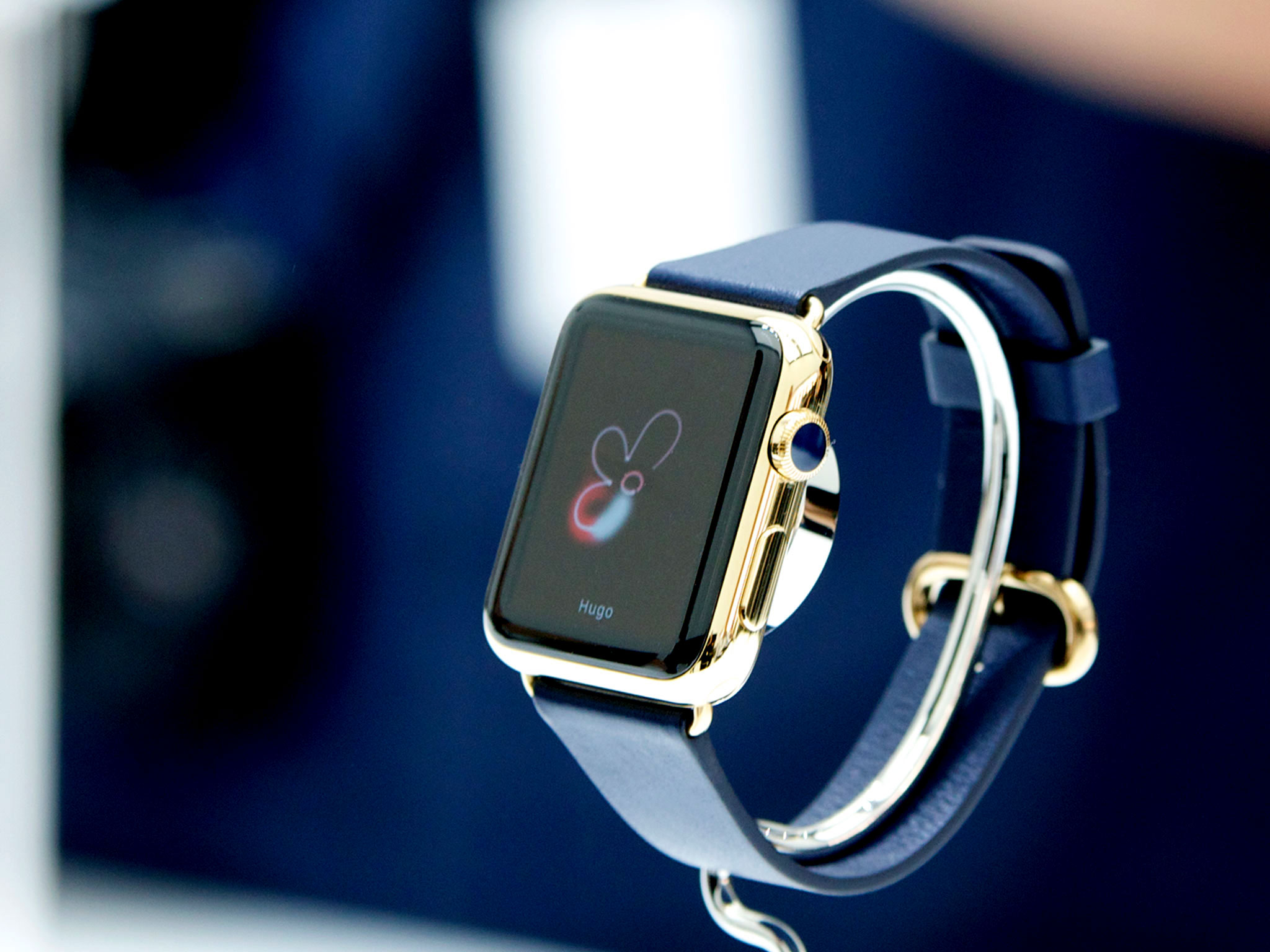The Apple Watch Edition's upgrade dilemma

As such, it's no surprise the Watch has been on my brain, as well — specifically the Edition model. There's been a lot of speculation on pricing and whether Apple will legitimately charge $10,000 (or more) for the gold models. To compete in the high-end watchmaker's space, that kind of cost isn't out of the question, but I do wonder: Can the company get away with selling a five-figure Apple Watch that's obsolescent in two years?
The $10,000 Watch
I should preface this by saying I've never purchased, owned, or been given a piece of jewelry over $5000, and I don't claim to speak for those who regularly seek out $15,000 watches and other jewelry items. But in my mind, when you eliminate the 1 percent of folks who have the capital to buy such a watch for everyday wear, you're left with a very different subsection of customers: those who may not have the money to buy such an item every year, but save for a special present or to pass it down through the family.
Maybe the Edition isn't designed to serve that market: At its core, it is technology, and as a society, we've become accustomed to regifting or recycling iPhone models every year or two for the next greatest thing. Maybe the people buying a five-figure Apple Watch are of a tier where they don't mind dropping that kind of cash every 18 months. Maybe the old Apple Watches get thrown into a bin in a safe in the back of the Apple Store and get shipped off somewhere to be reduced to component parts, the gold melted and reformed for Apple Watch 2.0.
Maybe I'm naive. But the whole concept just rubs me the wrong way.
The cost-per-year of Apple Watch ownership
I understand the justification of replacing an iPhone or a Mac when they've become too slow or outdated for their task — at most, I've spent $2000-$3000 on such a device, and its cost-per-year averages out to something where I don't feel wasteful in replacing the machine.
Watches are different. They're jewelry. They're as much a fashion accessory as they are a device. And watches can have a long lifespan, if treated properly. Watches have people trained in the art of repair, keeping someone's $20,000 timepiece from becoming a useless paperweight.
Once Apple jumps into that price point and that industry, should it expect that users will pay $10,000 again 18-30 months down the line to replace their watch? Does the advent of digital mean we're expected to replace our heirlooms now, rather than pass them down? I really don't know. Maybe the Edition is truly just meant for those who look at $5000 cost-per-year of ownership as no big deal on their bank account. Companies like Vertu have made a living off those customers; why shouldn't Apple?
iMore offers spot-on advice and guidance from our team of experts, with decades of Apple device experience to lean on. Learn more with iMore!
But I'd like to believe Apple is better than that. If they truly want to command the watch industry, they might take another page from watch-makers: repairability.
A replaceable core
I doubt Apple will ever let you take an Edition to a third party repair shop, but if they offered Apple Store-replaceable cores in their Edition watches, that could potentially be a way around the upgrade process. When Apple Watch 2.0 comes out, instead of paying another $10,000 for a brand-new watch, you pay $500-$1000 at an Apple Store, and a Watch Genius replaces the S1 chip with an S2 chip.
For the lower-end Sport and Apple Watch models, it makes sense to upgrade to the newest model and recycle the old. For the Edition, an "update" price point allows you to keep your beautiful piece of jewelry without sacrificing speed or technology.
Unfortunately, I don't know how practical such an idea actually is: Replacing RAM on a computer is one thing; replacing its entire chip is another thing entirely, especially one "encapsulated in resin" during the building process. And then there's the question of screen resolution upgrades and additional sensors: It's a bit hard to "update" those with a quick back-of-house fix. A trade-in program with heavy discounts isn't out of the question, either, though you'd essentially be getting a new watch in lieu of updating your old one.
It's a hard nut to crack. Apple has built their entire industry on devices that — while they last longer than their competition — are designed to eventually be succeeded by better devices. In contrast, I sense technology plays little role in convincing customers to buy a new Rolex for their collection: If you're picking up a second Rolex 18 months after your first, chances are it's for fashion reasons, not new and special timekeeping features, and you're in the vast minority of consumers when doing so.
What to do?
Apple could solely go after the high-end fashion market, say "These customers have no qualms about paying $15,000 every two years," and be done with it. Or the company could invest in some sort of long-term support for its Edition customers. And even after writing all this, I'm still no closer to figuring out which one the company will pick. The former model favors Apple's traditional business model, just at a much higher income bracket. The latter feels more like an Apple move, to support its customers and give them the best experience possible.
I suppose we'll see in April just what the company decides. Until then, let's chat about it — is Apple going to abandon Edition customers in version 2.0 and expect them to upgrade like everyone else? Or do you think they might come up with some sort of update program?
Serenity was formerly the Managing Editor at iMore, and now works for Apple. She's been talking, writing about, and tinkering with Apple products since she was old enough to double-click. In her spare time, she sketches, sings, and in her secret superhero life, plays roller derby. Follow her on Twitter @settern.


